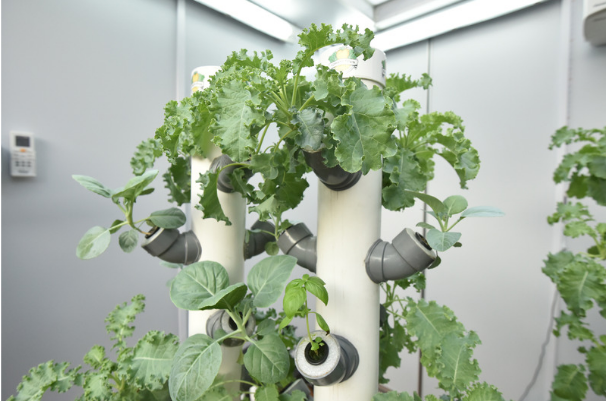An urban farm is a key for city dwellers who are also green thumbs and want to turn their piece of the concrete jungle into a thriving green oasis. That’s right, farming is for more than just folks with acres of land in the countryside. Whether you’ve got a balcony, a rooftop, or a tiny backyard, you can dip your toes into creating your urban farm.
Developing an urban farm is like bringing the farm to the city – a game-changer in agriculture. We’re talking tomatoes on your terrace, herbs in your high-rise, and maybe even a few chickens clucking happily in your urban sanctuary. The $213 Billion urban farming market in 2020 is projected to grow around 2.8% per year up to 2026!
The perks of an urban farm are nothing to scoff at – increased food security, reduced waste, and a stronger sense of community. If this sounds like your type of activity, we have four tips to ensure your urban space is super efficient.
4 Tips for Urban Farm Success

Tip #1: Be efficient with space with vertical farming
The average apartment space per person in America is just 526 square feet, so room is an issue! This is a game-changer in maximizing space efficiently, as you can grow crops horizontally and stack them vertically in layers for the most efficient use of space in your urban farm.
Vertical farming involves utilizing every inch of available space by growing crops on shelves or specially modified pallets against walls and fences. The possibilities are vast – abandoned mineshafts, underground tunnels, buildings, and even shipping containers can become the canvas for these innovative farms.
Most plants don’t need a ton of vertical space to thrive, so stacking three or four shelves of plants on top of each other in the limited square footage mentioned above is working overtime, producing 300% to 400% more plants for your urban farm than conventional methods would allow.
Tip #2: A feathered addition to take your urban farm to the next level
Chickens bring hyper-local eggs to your backyard that are fresher, tastier, and more nutritious than you’d find in a supermarket; chickens happily peck away at food waste! Before you dive headfirst into chicken coops and feathers, there’s the issue of keeping your cluckers safe from the urban jungle’s version of villains – foxes, raccoons, and coyotes. These predators seem to have a PhD in breaking into chicken coops, turning your feathery friends into snacks. If you’re thinking about chickens for your urban farm, you must protect them.
Level up your coop security with the help of an automatic chicken coop door. These nifty gadgets work on timers or motion sensors, ensuring your chickens are safely tucked away when dusk falls and free to roam when the sun rises on your urban farm.
Step #3: Avoid the relentless invasion of weeds
Weeds are pesky little intruders that can turn your urban farm into a battleground if left unchecked. The key to organically managing weeds is nurturing your garden’s very foundation – the soil. Enriching it with organic matter, whether nutrient-packed compost or aged manure, is like giving your garden a superhero serum. This boosts the soil’s structure and creates a haven for a squad of beneficial microbes.
Mulch also acts as a suppressant for weed growth and plays a dual role as a soil enhancer for an urban farm. It adds fertility and moisture retention as it breaks down, creating an environment less than ideal for weed mischief. Remember, the thickness and type of mulch can be tailored to suit your urban farm needs and the unique preferences of your cultivated plants.
Tip #4: Dive into the futuristic world of hydroponics
This soil-less marvel isn’t just a method; it’s a revolution in how we nurture plants, waving goodbye to traditional soil and saying hello to a nutrient-rich water wonderland for your urban farm.
In hydroponics, plants aren’t anchored in soil. Instead, they bask in a nutrient-rich aquatic environment, where nutrients are added to the water surrounding the plants or flowing over their roots. Materials like gravel, perlite, or other mediums can be used to provide some stability and support. This way, plants get the physical support they need without the confines of traditional soil making your urban farm efficient.
Hydroponics are efficient and versatile – you can use chemical fertilizers or go the organic route with materials like manure. But the real magic happens with water conservation. Hydroponic systems recycle and reuse water, making them superheroes in the quest for water-efficient agriculture.
To put it in perspective, a conventional farm requires a whopping 400 liters of water to grow a kilogram of tomatoes. Enter hydroponics, and suddenly, you’re achieving the same result with just 70 liters of water. That’s efficiency!
Want some more design ideas?
Dig This Design is continually adding new design ideas for your home, and if you bookmark our site, you’ll have a go-to resource full of ideas, inspiration, and possibilities. We want to help you get the best out of your space!





